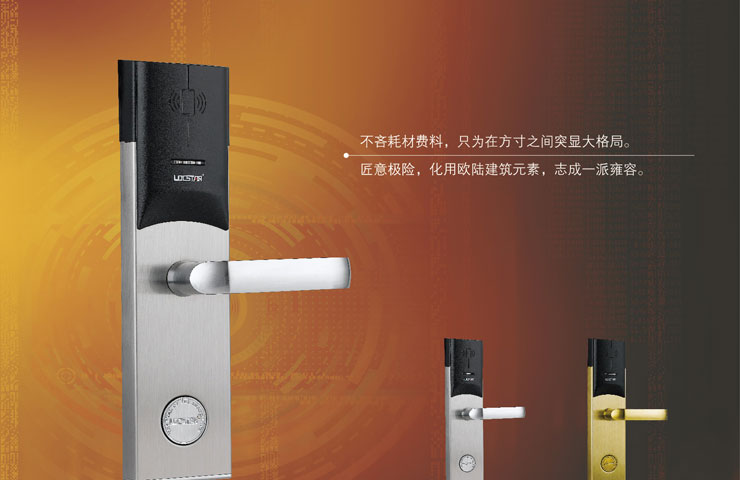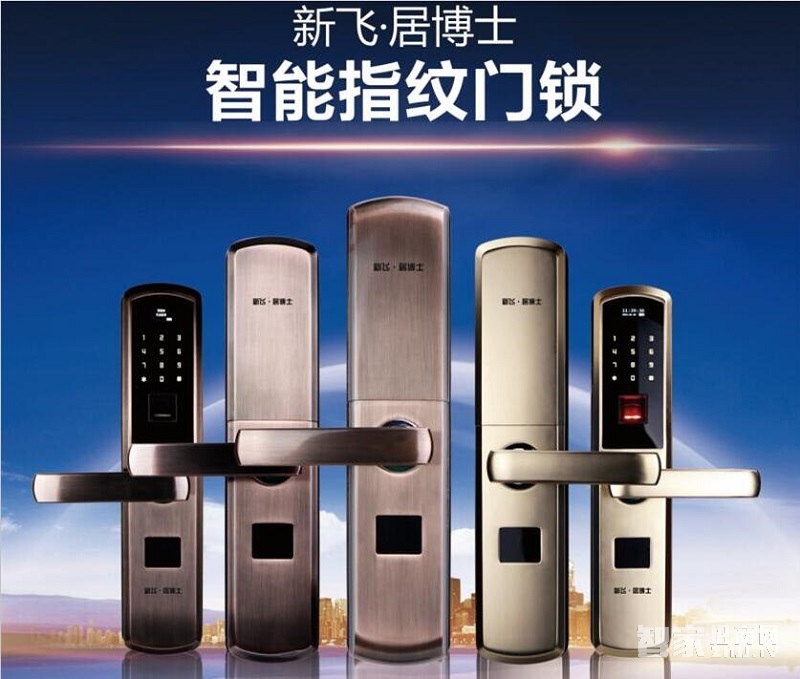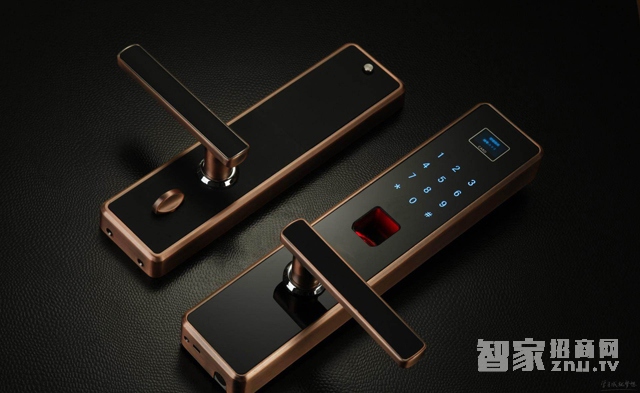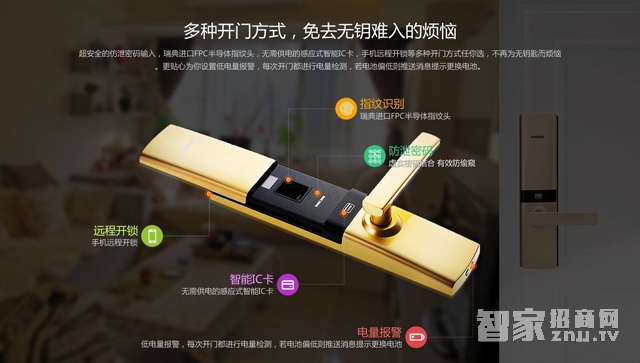With the progress of society and the development of the times, the improvement of people’s living standards has also been accompanied by the increasing awareness of security and prevention. For the family's first protection is the lock, in 2017 the smart lock has become the best choice for the upgrading of consumer locks, at the same time the development of the smart home market and the maturity of technology, many companies enter the smart lock market , Including the traditional lock industry and new technology companies!
In the early 1990s, with the development of economy and the deepening of reform and opening, various technological products and fashion elements began to flow from China into the country. Smart locks (which can only be regarded as electronic locks) entered China in this period. market.
At that time, the pioneers of China's electronic locks began their entrepreneurial journey with electronic locks in developed countries such as Europe, America, Japan and South Korea, and created their own hotel locks in the absence of experience and technology. Today, after more than 20 years of development, China has achieved a leap from electronic locks to fingerprint locks to smart locks, and has successfully ranked among the world's smartest nations.
If we want to summarize the development process of China's smart lock, we can divide it into four eras: the era of credit card hotel lock and password electronic lock in the early 90's and 90's (1.0 era), and the era of fingerprint lock in 2000-2010 ( The era of 2.0); 2011-2016, a variety of biometric coexistence and intelligent locks began to touch the network era (3.0 era); in 2017, China's smart lock has begun to move toward the era of artificial intelligence 4.0.
1.0 era: 1989-1999 swiping electronic locks into a star hotel standard
The study of electronic locks can be traced back to the 1930s. At that time, there was a crypto-electronic lock. Compared with mechanical locks, password electronic locks at that time had advantages such as large number of keys and were not easily copied. However, due to price and difficult manufacturing processes, they could only be used in certain special places in developed countries like Europe and the United States.
Until the 1980s, with the maturity and development of integrated circuits, the stability of the electronic components of electronic locks has been further improved, and the size of electronic locks has also become more compact, but the cost is still high due to high power consumption. For other reasons, it is still limited to the use of a small number of high-end venues and high-end individuals, and has not been widely used.
In the 1990s, Europe and the United States, Japan and South Korea, and China's Taiwan and Hong Kong, and other countries and regions, have achieved rapid development in emerging technologies such as microelectronics, communications, and control technologies, providing technology for the development and production of electronic locks. On the support. Therefore, in Europe, America, Japan and South Korea and other countries and regions has been a certain degree of popularization, especially in South Korea, home electronic lock penetration rate of more than 10%.

In China, the development of electronic locks really began in the 1990s. During this period, our electronic locks were mainly used in hotels and other commercial areas. Especially after 1996, the country began to promote electronic door locks in star hotels. Moreover, hotels that did not use electronic door locks would not be able to participate in the inspection and acceptance, nor would they be able to rate stars. Under the promotion of this policy, the electronic lock industry in China Usher in a rapid development opportunity.
At this stage, hotel locks accounted for more than 95% of China's electronic lock market. Although the hotel lock market was very large at that time, most companies did not have their own core technologies and were still at the stage of imitating and borrowing products from Europe, America and Japan.
Since the 1990s, biometric electronic locks based on fingerprints have emerged in developed countries, but in China, the main use of magnetic locks is mainly in hotels. Until the late 1990s, IC cards started in China. Electronic lock industry applications. At the same time, there was also a "card + password" opener in this period, but most of them were push-button password keyboards.
The 2.0 era: 2000-2010 fingerprint locks began to move toward the stage of history
After entering the 20th century, the electronic lock industry in China has developed rapidly. Many companies have also begun to shift from the hotel's electronic lock to home fingerprint locks. Although the appearance and some technologies are still based on learning from South Korea, the use of fingerprint identification technology has laid the foundation for the electronic lock home process.

2000-2003 is the initial stage of China's household fingerprint lock industry. During this period, China's electronic lock industry showed a small size and small size of the "two small" features. And electronic locks are only used in a few high-end communities. However, during this period, electronic locks began to attract the attention of the state, and the Ministry of Public Security organized and published China's first electronic lock standard, “GA374-2001 Electronic Anti-theft Lock†(2001). That is, in 2001 when China’s first electronic lock standard was released, China’s first civilian fingerprint lock was born.
From 2004 to 2007, China's home electronic locks began to be favored by the high-end engineering market. Although China's electronic locks have not yet shaken off the characteristics of “two smalls†(small industry size and small business scale) during this period, many companies’ electronic lock products have been mass produced and they have begun to receive major real estate developers. High-end residential engineering orders.
2007-2010 is the phase of China's electronic lock engineering market began blowout (this is relative to the previous, in fact, the amount is not very large), during this period most of our country has been imitating, learning from, copying Korean products, Began to embark on the road of independent research and development, the product has begun to have its own characteristics of China, most companies have basically a clear direction of development.
From a product point of view, in addition to the traditional mechanical keys, IC cards and passwords, the smart lock products of this period have become the standard for household locks. However, the fingerprint modules in this period mainly focused on optics. From the perspective of the number of enterprises, the number of electronic lock companies has risen from less than 50 to more than 100 in the 1.0 era.
3.0 Era: 2011-2016 Many kinds of biometrics coexist, networking has become a trend
From 2011 to 2016, China's electronic lock industry has been increased from hotel locks and fingerprint locks to smart locks, and the number of companies has soared. The giants have landed on the beach, with richer functions, more stylish and personalized, and stable. Improvements, remote unlocking, and networking have become trends.
In terms of the market, not only has the engineering market continued to grow rapidly, but the initial installation rate of real estate smart locks has also been increasing, and the retail market has also been advancing rapidly. According to the “China Smart Lock White Paper 2017†released by Analysys, China’s smart lock sales in 2015 were 1.97 million sets, while in 2016 it showed a rapid growth of 105.4%, and the market sales volume soared to 4.046 million sets.
From the product point of view, in terms of opening methods, in addition to IC cards, passwords, mechanical keys, and fingerprints, many companies identify humans such as face recognition, iris recognition, finger vein recognition, and other high-security biometrics for differentiated development. Technology is introduced into the smart lock industry. However, at present, fingerprint recognition is still the mainstream of the market, and it has been upgraded from the 2.0 era optical fingerprinting module to today's semiconductor fingerprint identification module.

In terms of appearance, smart lock design is more fashionable, bolder, and more personal than the 1.0 and 2.0 era. European style, new Chinese style, rural style, and other different styles of smart locks are everywhere; the use of color is no longer confined to the formerly too single form, and the different color styles such as red, orange, red, green, blue, purple, and two-color match continue to emerge. Less favored by younger consumers.
At the same time, a variety of shapes are also emerging, such as the small waist, sports cars, push-pull and other styles are particularly eye-catching, compared to the 1.0, 2.0 era of electronic locks, looks more stylish, more sense of technology.
In recent years, with the development of the Internet of Things, smart homes and the Internet, the trend of smart lock networking has become clearer. Smart locks have also staged an "entry war" for smart homes with smartphones, smart routers, and smart TVs. And since the Internet of Things technology is becoming more and more mature, remote opening, remote control, remote alarm, and remote monitoring have become the standard for many smart locks.
With the deepening of smart lock nets and network efficiency after the installation base reaches a critical point, “smart lock + APP†or “smart lock + WeChat†has become one of the symbols of the Smart Lock 3.0 era, achieving a machine in hand. , Check the status of your home, anytime, anywhere. Moreover, the form of remote control will continue to continue.
4.0 Era: 2017 - Artificial Intelligence (AI) Smart Locks have been exposed
Today, with the influx of more companies, the competition in the smart lock industry has entered a state of intense development and homogenization. Against this background, smart lock companies without R&D strength have no alternative but to imitate and play low-priced cards.
Therefore, many smart lock companies that do not dare to lag behind in order to get rid of homogeneity, are also seeking new ways to become industry leaders. In the context of artificial intelligence fires, many smart locks unlocked their attention to the artificial intelligence body, which opened the 4.0 era of smart lock artificial intelligence.
According to the explanation of Baidu Encyclopedia, artificial intelligence is a discipline that studies computer-aided simulations of certain thought processes and intelligent behaviors (such as learning, reasoning, thinking, planning, etc.), mainly including the principle of computer-aided intelligence, manufacturing similar to the human brain. Intelligent computers enable computers to achieve higher-level applications.

The use of artificial intelligence in the field of smart locks mainly realizes seamless connection and communication between people, machines, and systems, allowing door locks to have basic judgment and learning capabilities, so as to realize intelligent use; at the same time, through the use of big data. Support, smart locks can analyze and learn the user's unlocking habits and usage habits, and then translate them into machine thinking through analysis of user habits, thereby providing users with a better experience.
For example, a smart lock with self-learning can continuously update and learn the operation during user unlocking, and then further improve the accuracy and speed of unlocking during the learning process, and substantially increase the fingerprint recognition rate. In other words, smart locks. The more you use it, the faster you will use it;
For another example, smart locks can make judgments and analysis every day according to the usual home and child time points for the elderly and children at home, in addition to notifying the user every day of their entry and exit conditions and unlocking records, if they are not in peacetime. The smart lock will inform the user when the door is not opened or closed in time within the time period when the door is frequently opened and closed, and the user is reminded to confirm whether they are safe.
Today, although such smart locks have begun to be used commercially, the Smart Lock artificial intelligence 4.0 era has only just begun. Therefore, there are still many human-machine interactions, human-machine smart interconnections, and autonomous learning functions to be developed. But this must be the future trend. Have you prepared for the arrival of the Smart Lock 4.0 era?
Our Click luxury Vinyl Tile Flooring can drastically change the appearance of any room in need of a facelift. Because it can be laid atop most types of subflooring, it`s a natural fit in any home.
Click Luxury Vinyl Tile is formaldehyde-free and SGS certified to meet stricter air quality criteria, specifically to account for sensitive individuals, and to ensure acceptability for use in environments such as schools and healthcare facilities.
Click Vinyl Flooring,Vinyl Tile Flooring,Vinyl Flooring Sheet,Vinyl Flooring PVC
GreenOmni Surface Co., Ltd , https://www.greenomnifloors.com